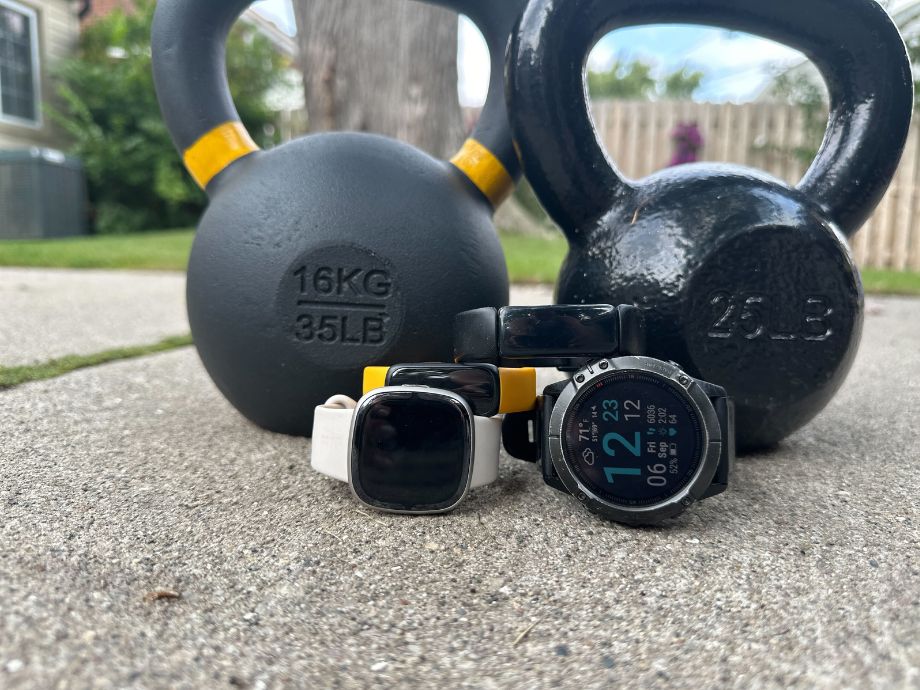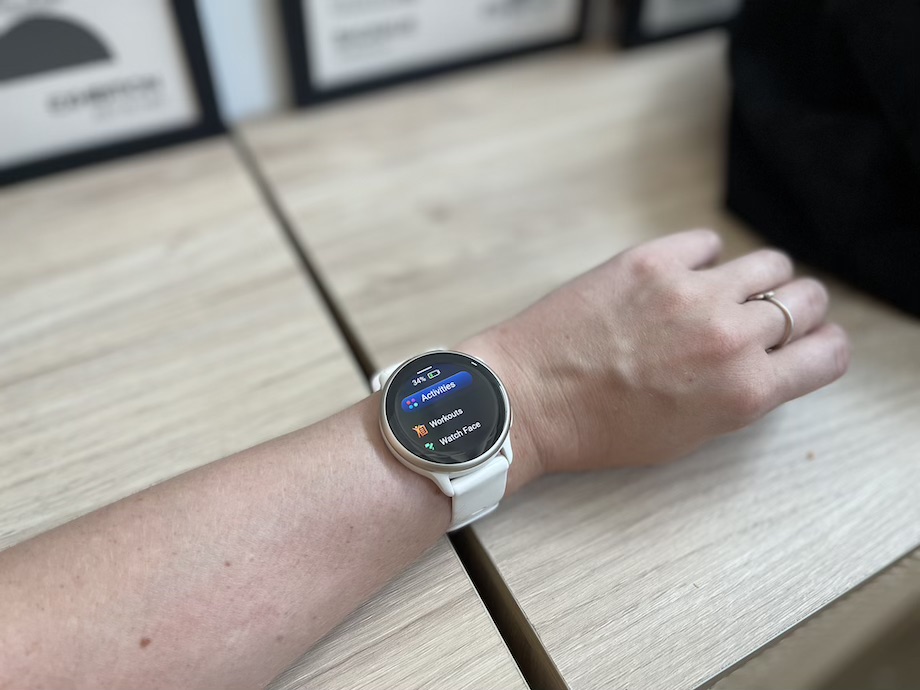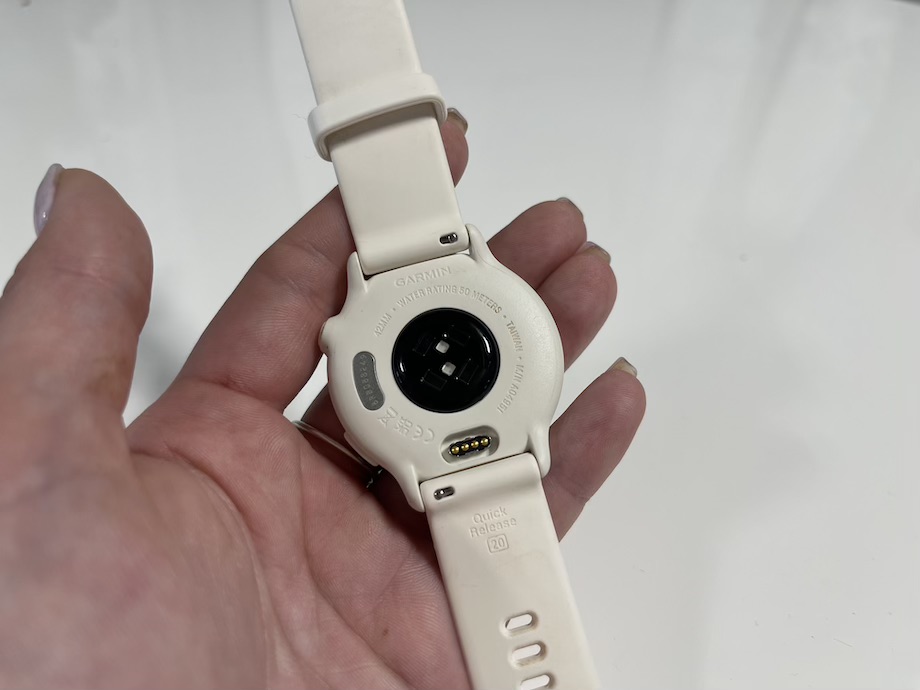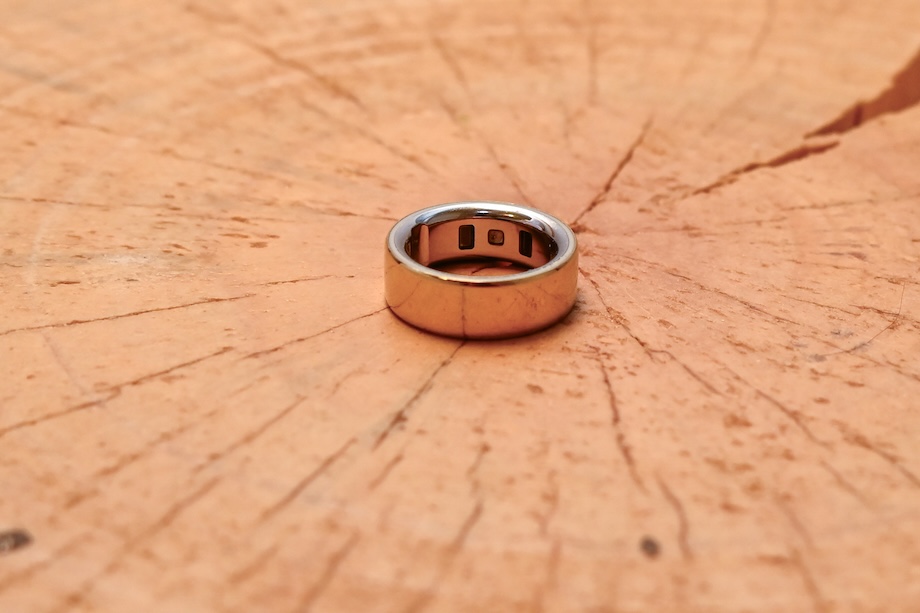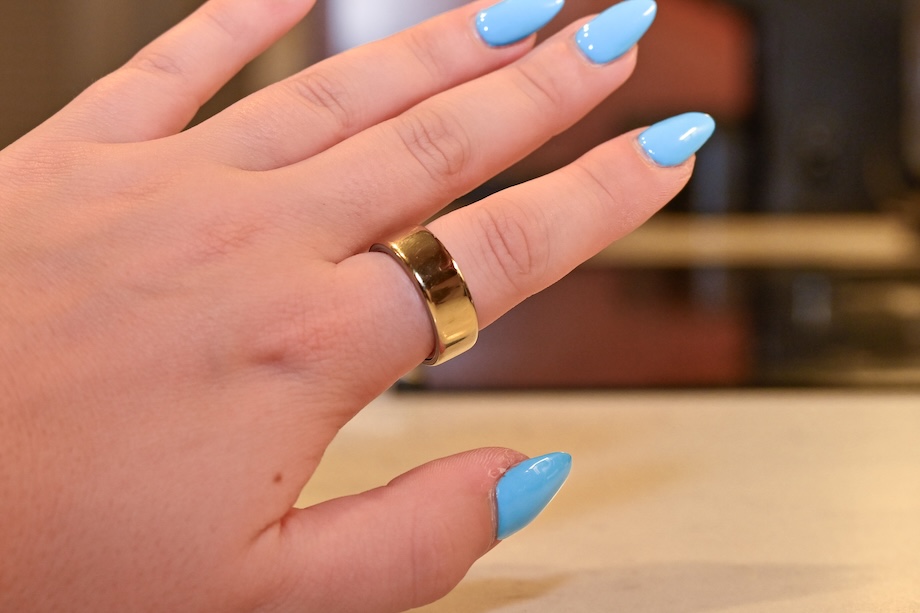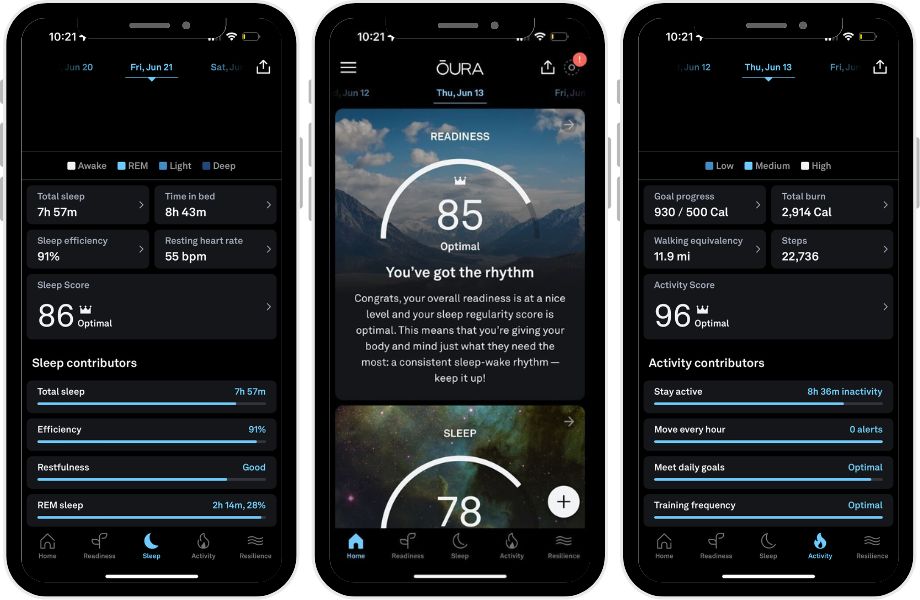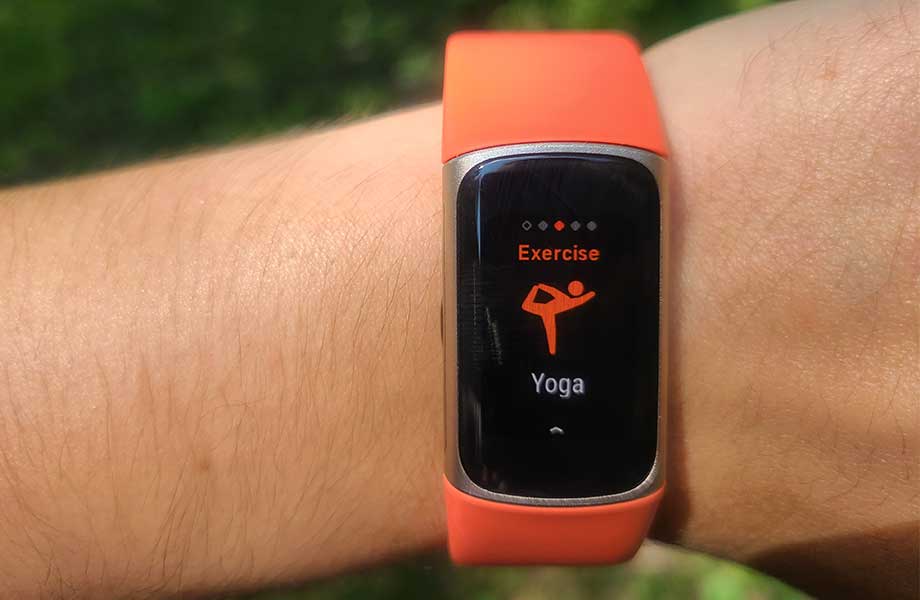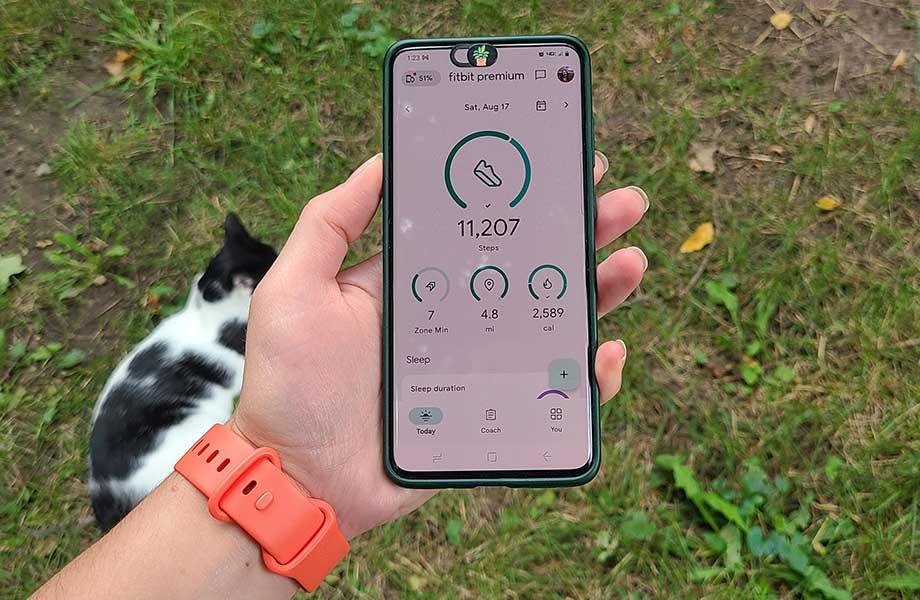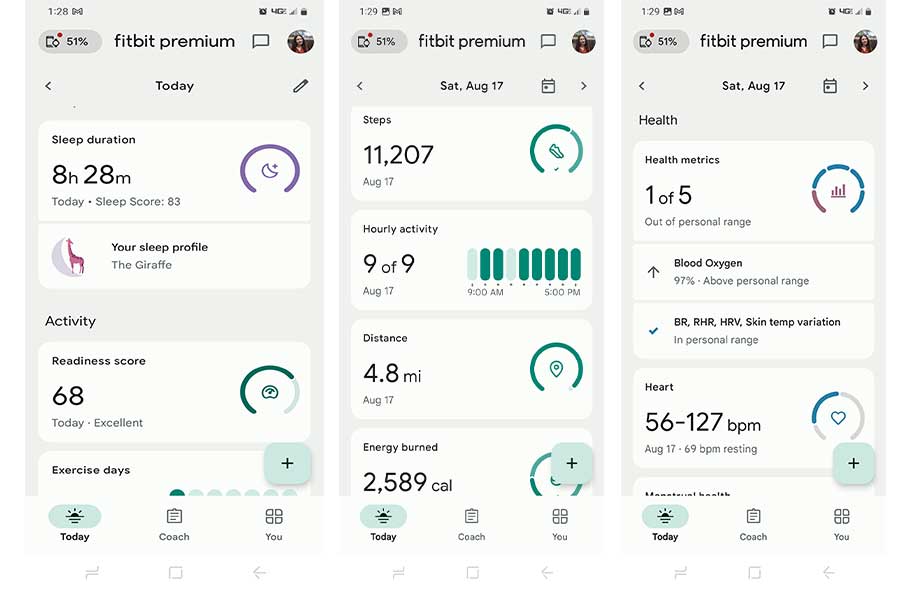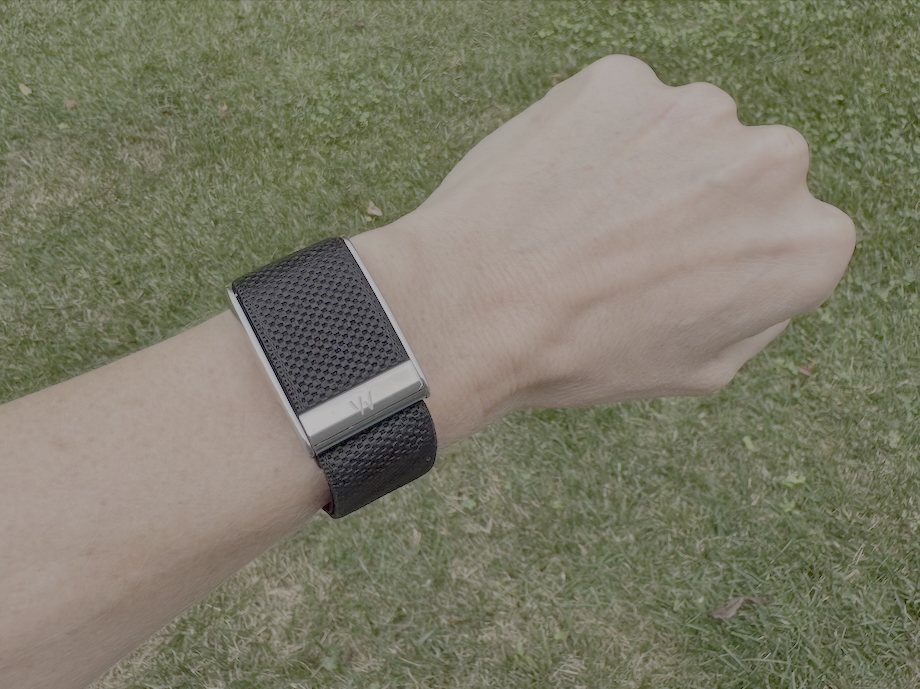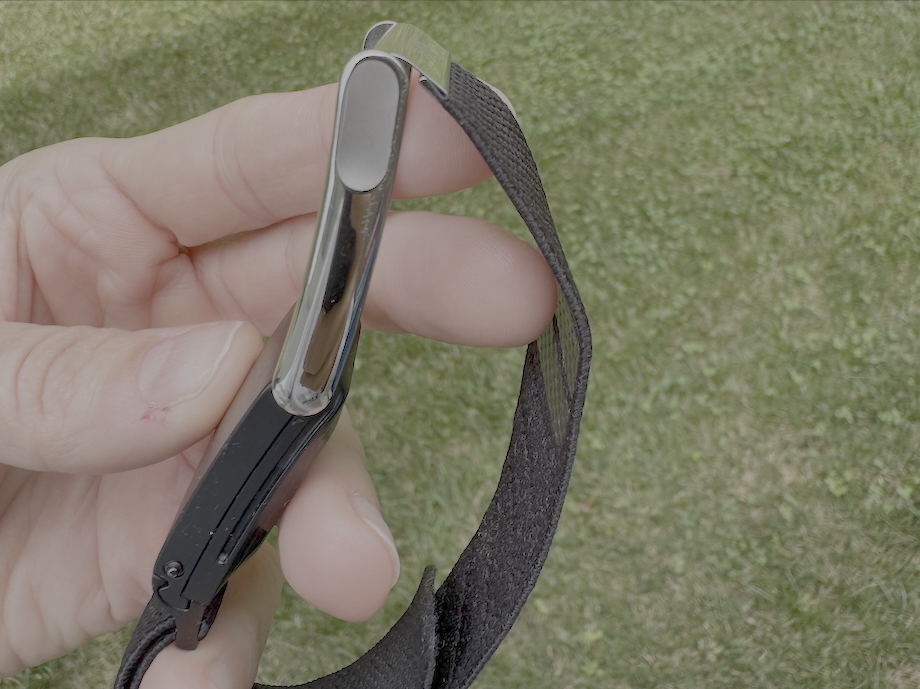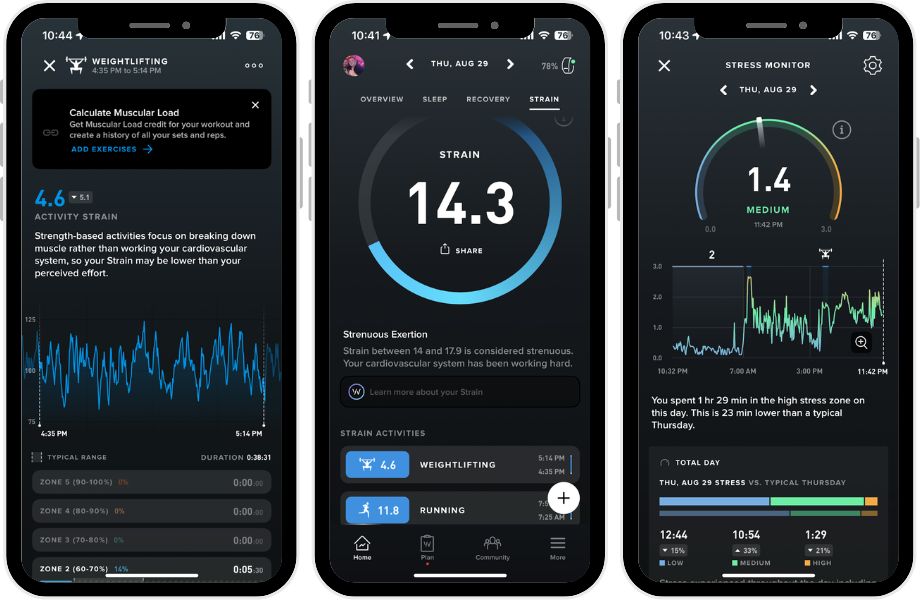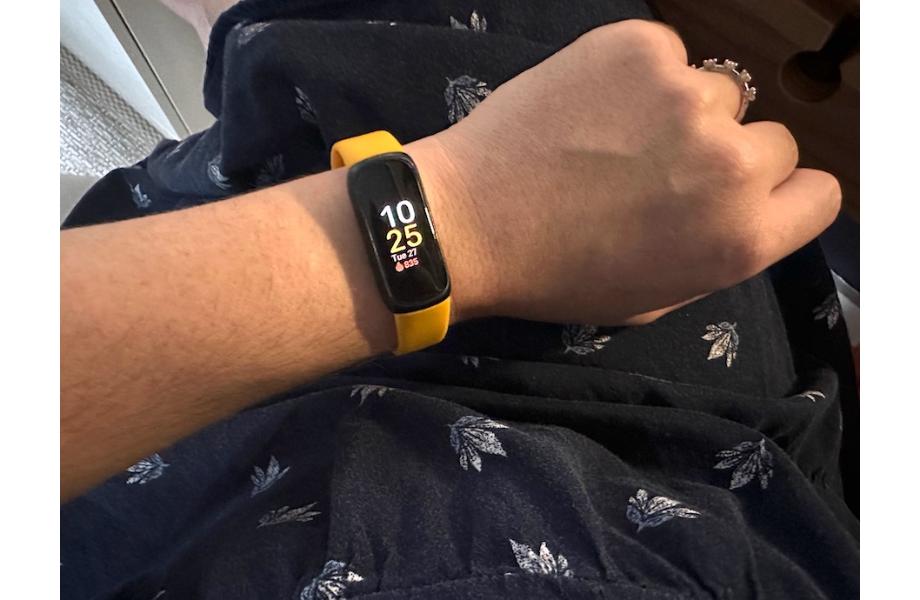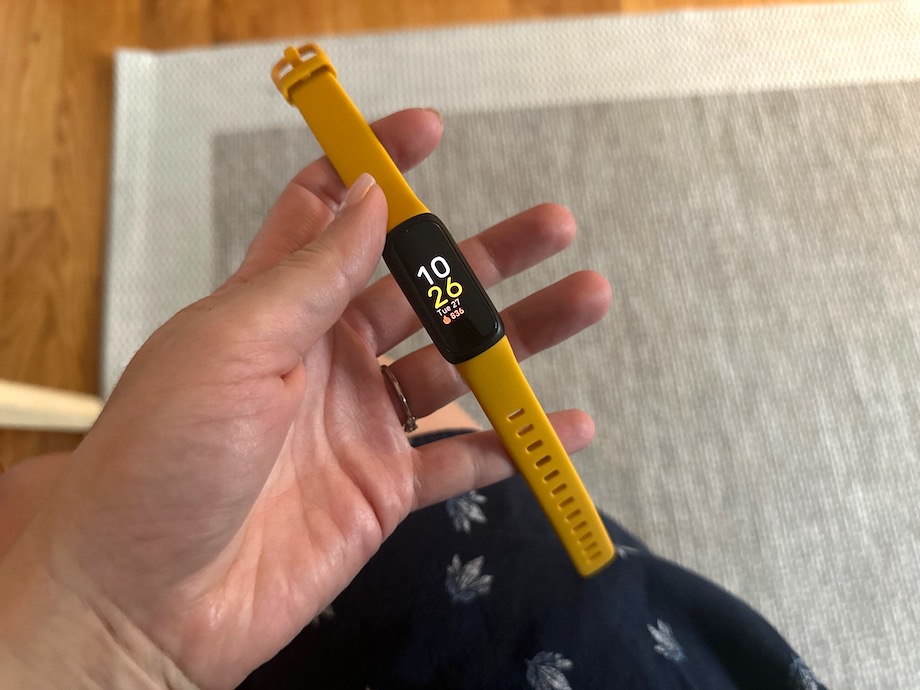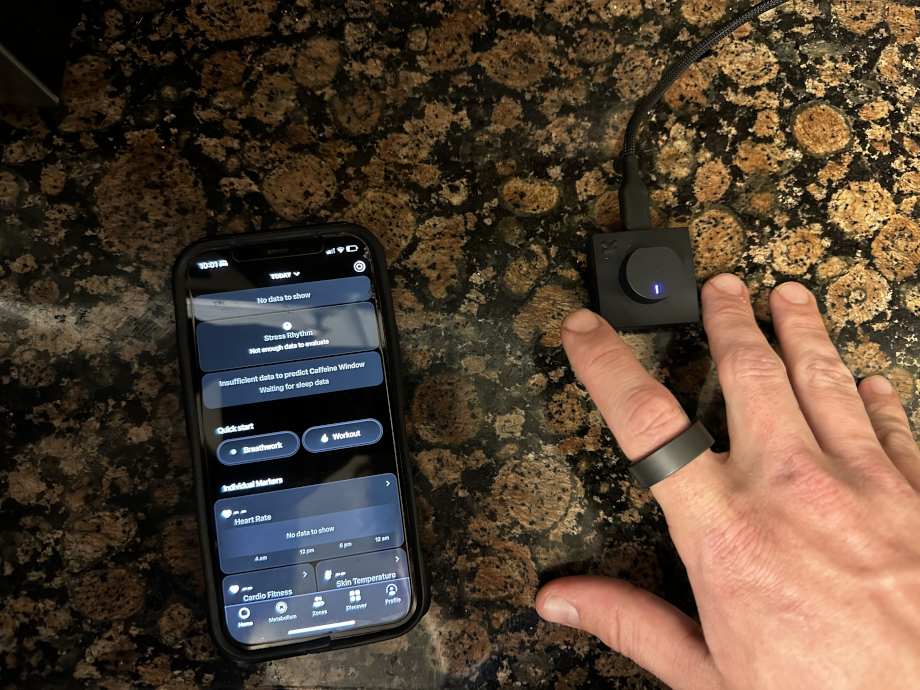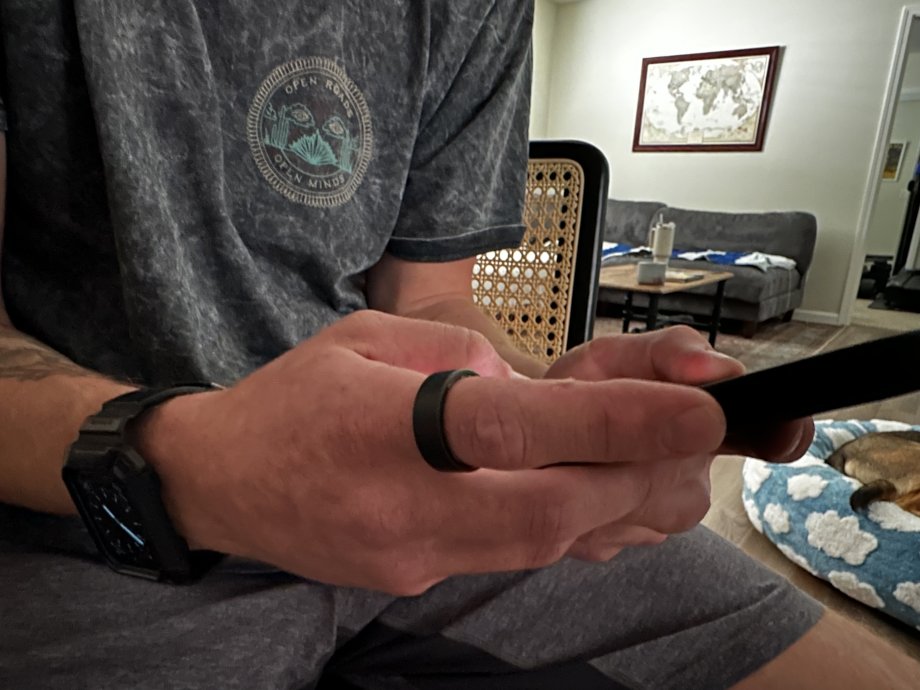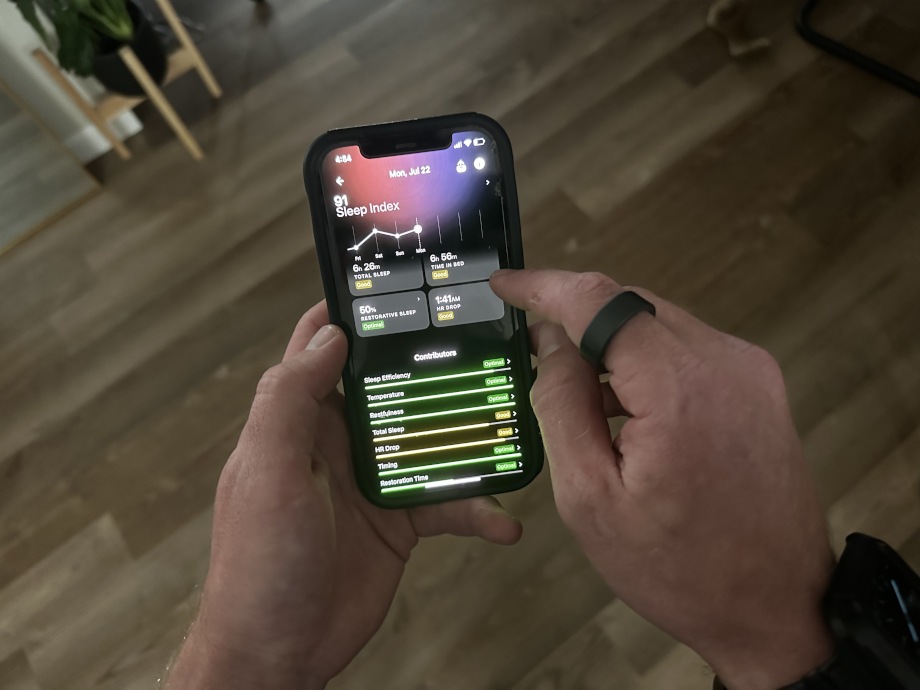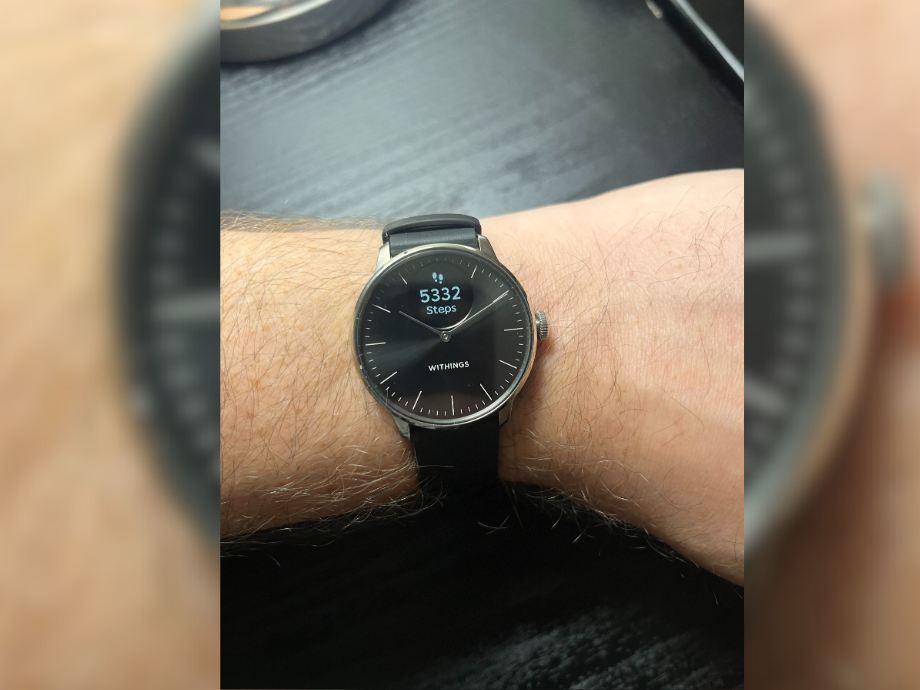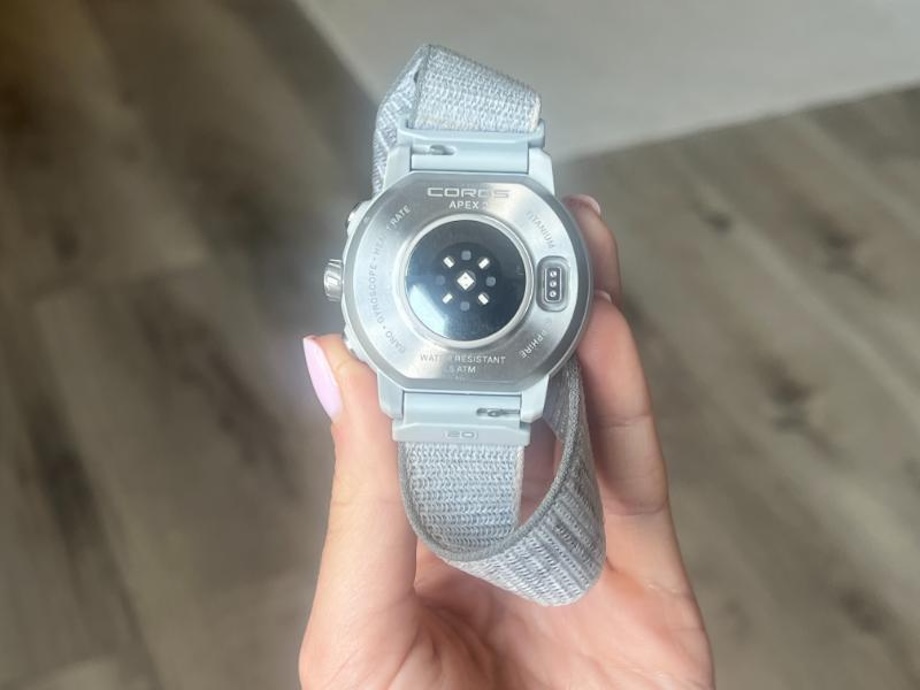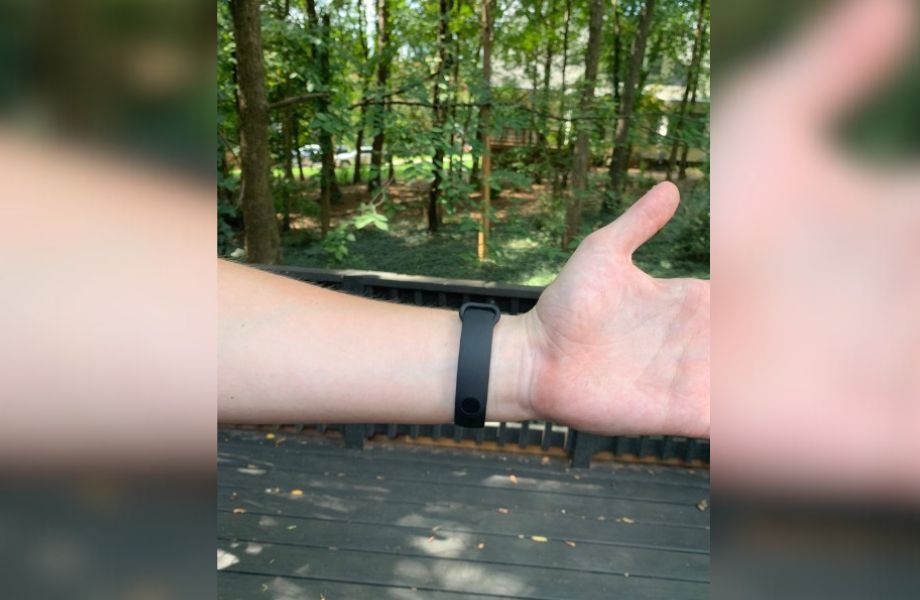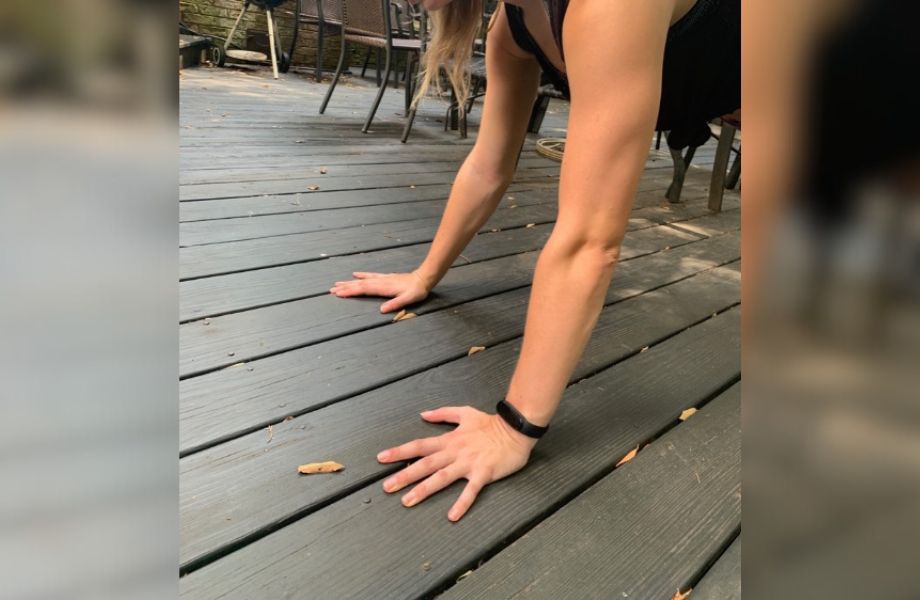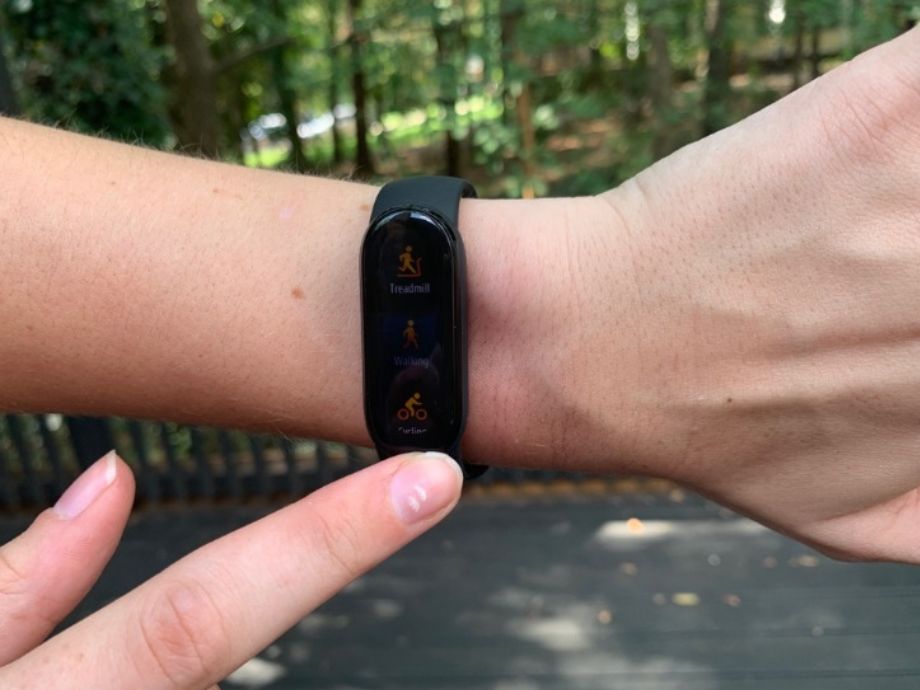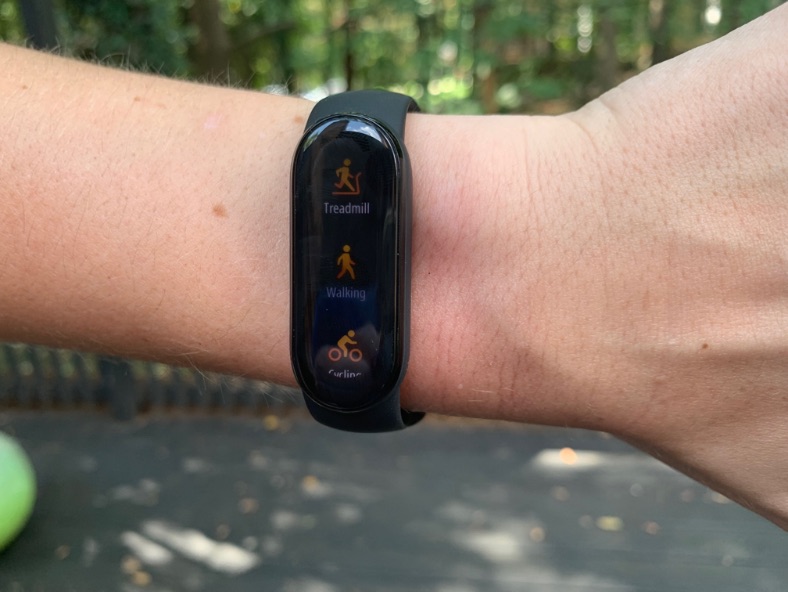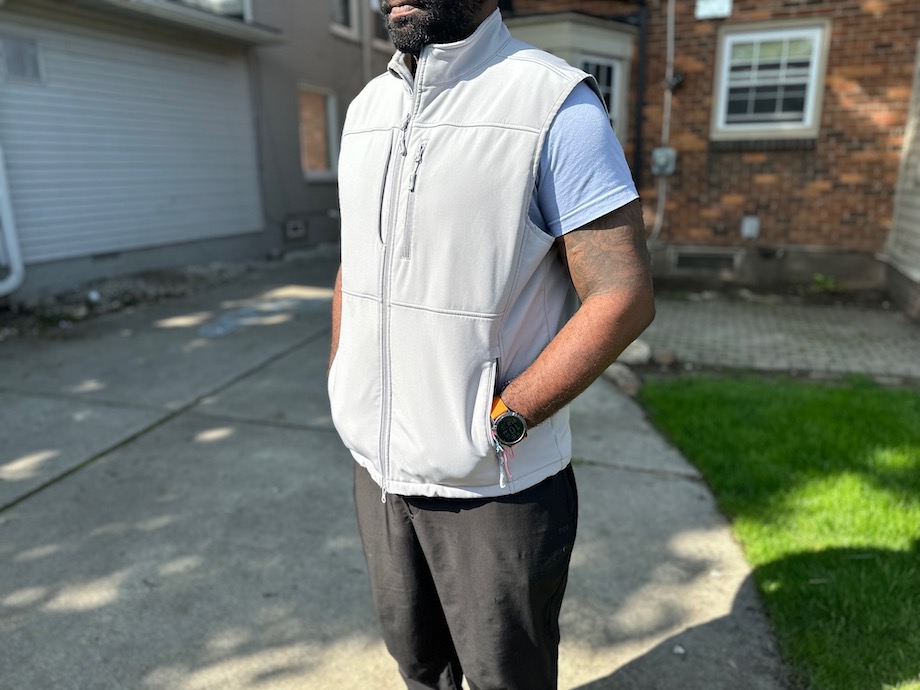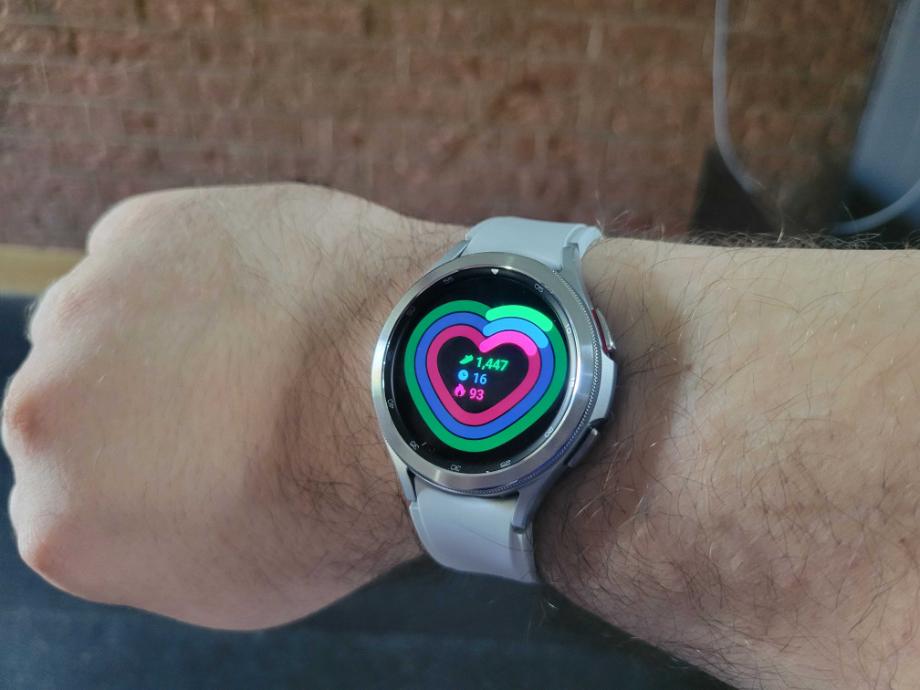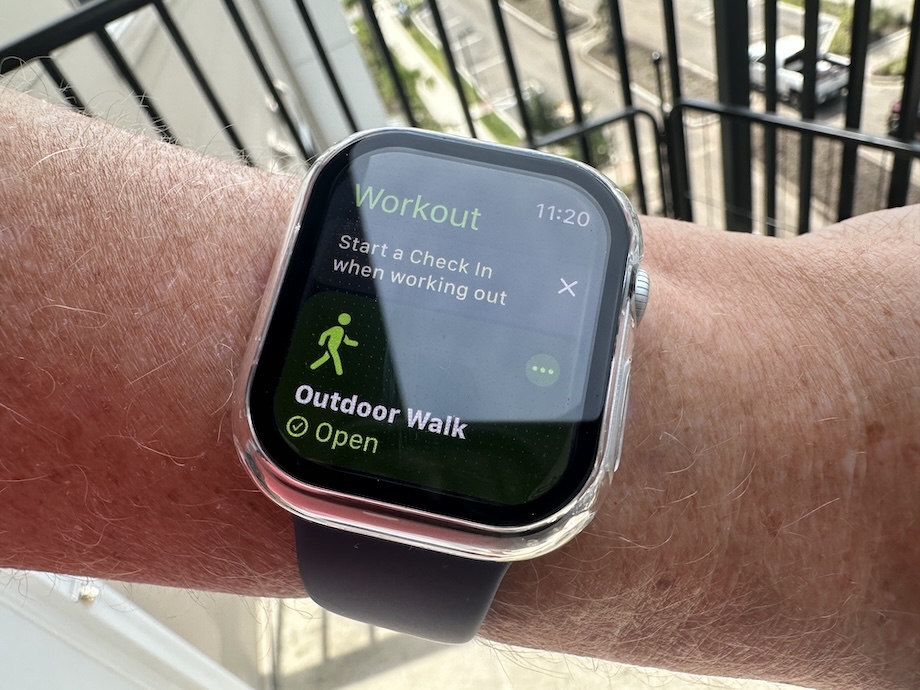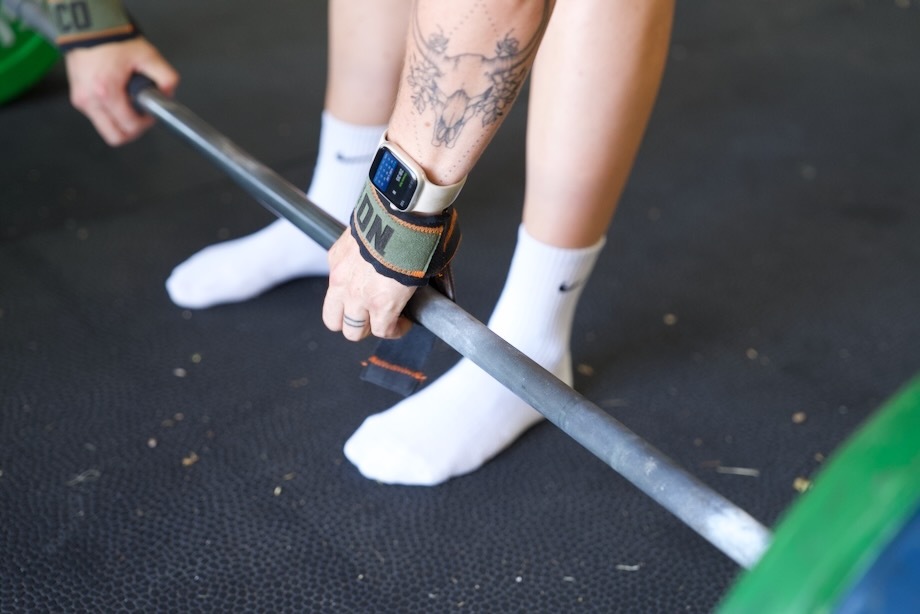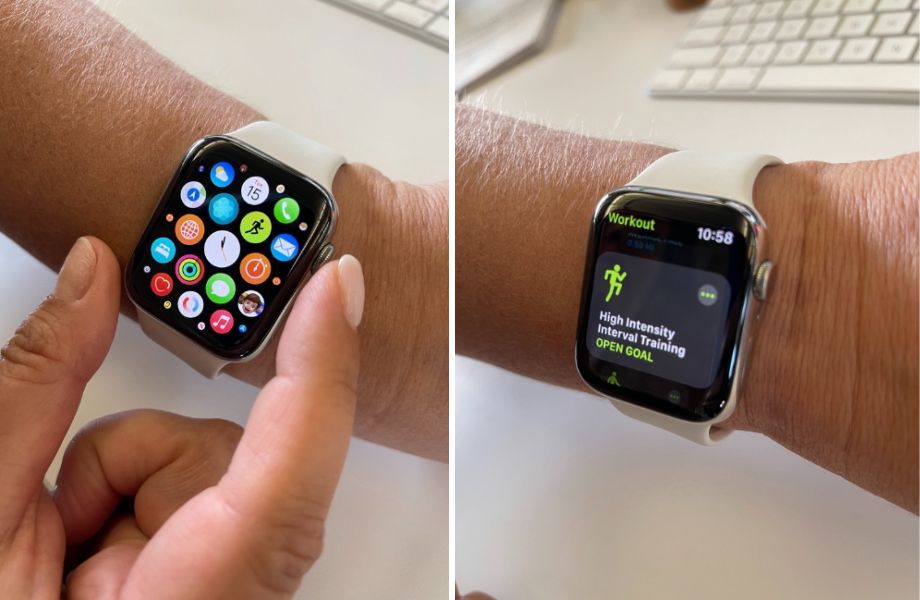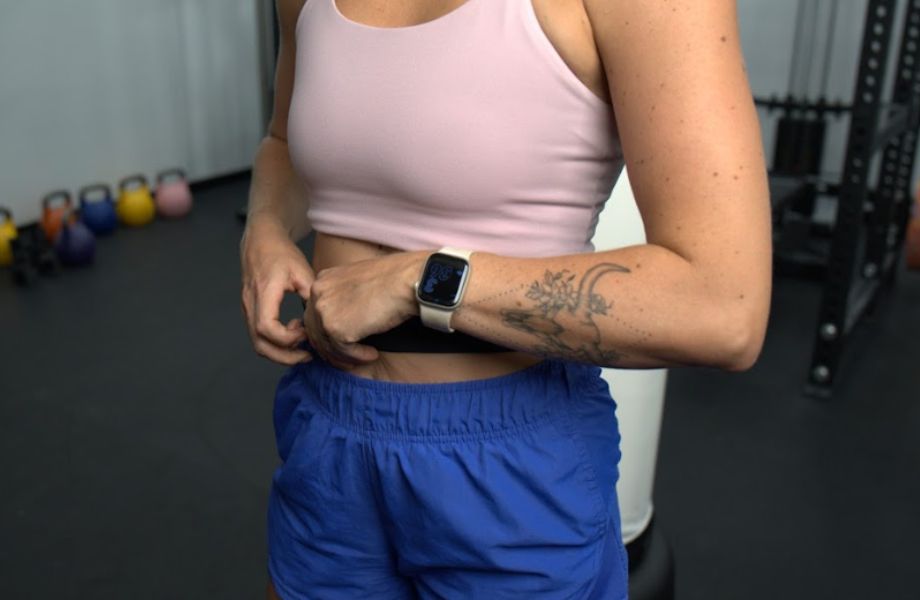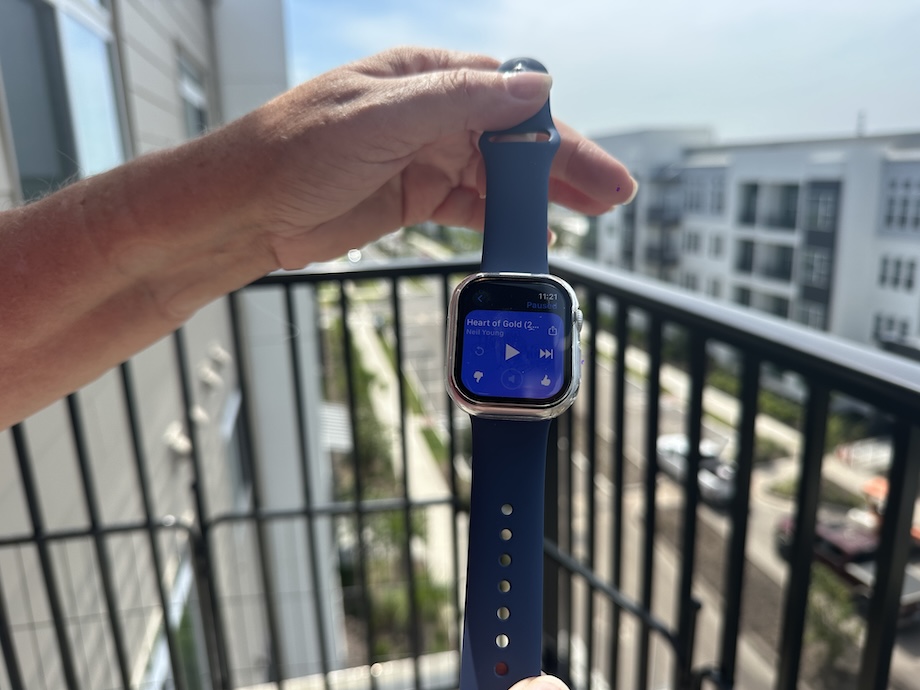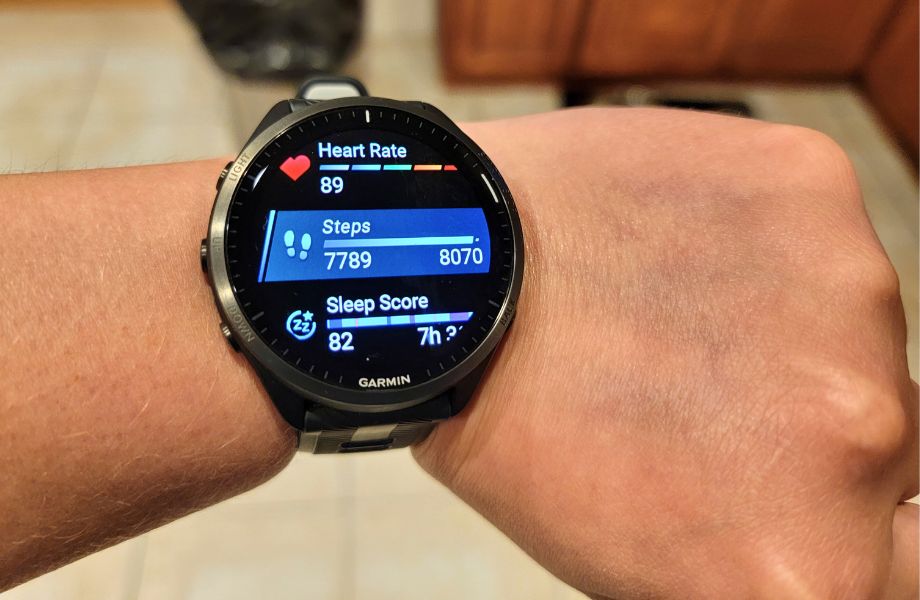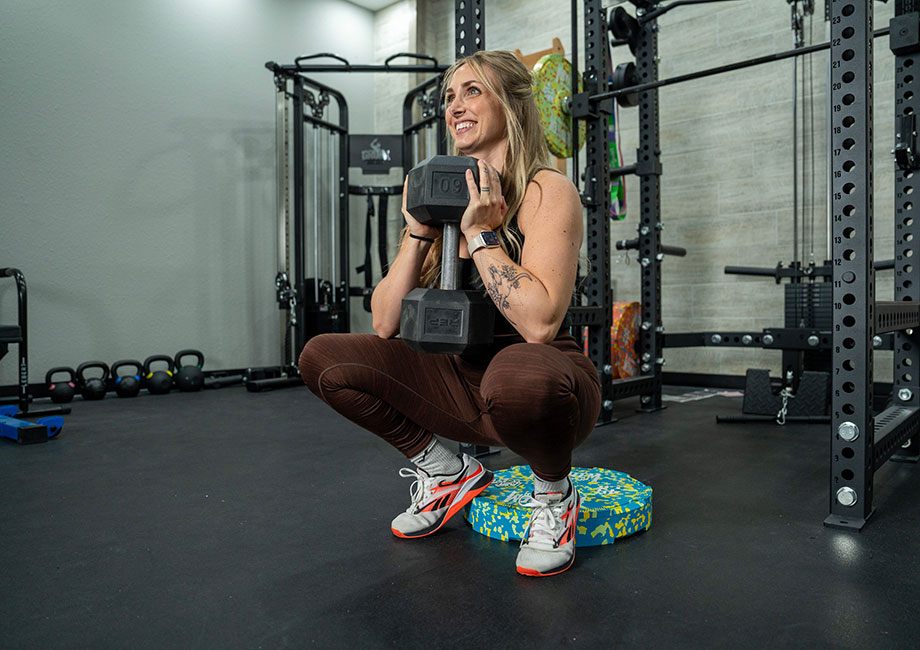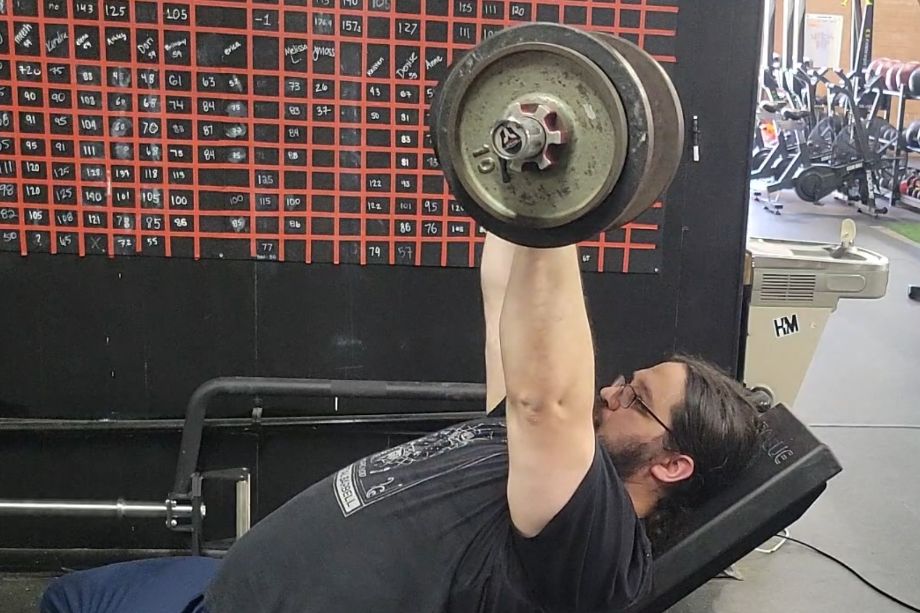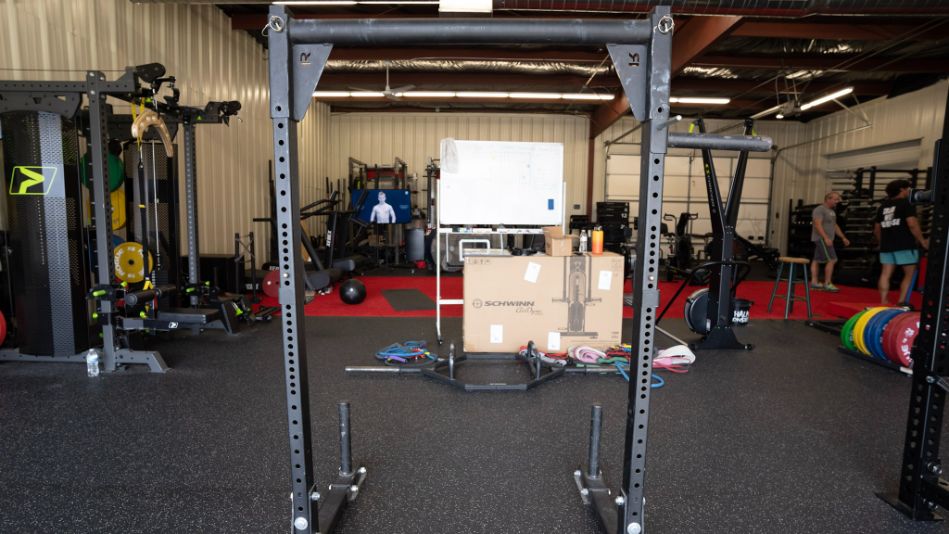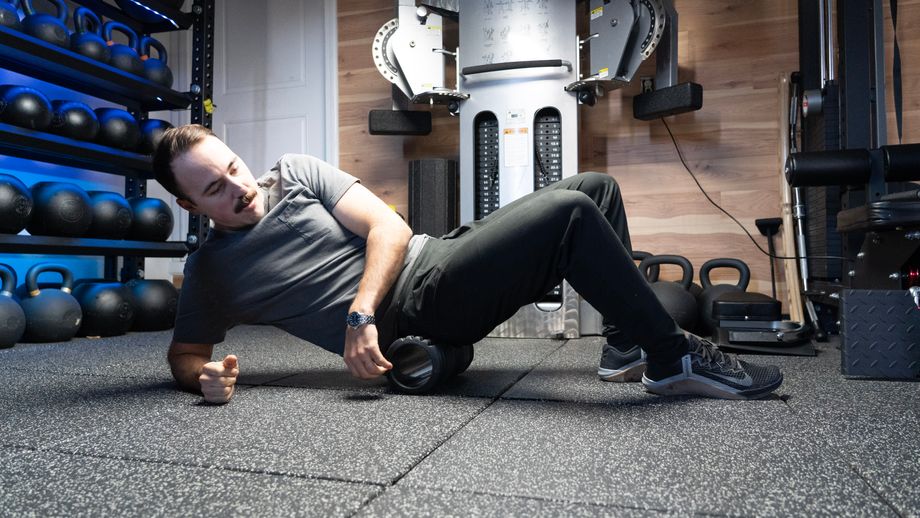Fitness trackers are not a new invention. For decades, people have been counting their daily steps with things like primitive pedometers. Today’s wearables have much more to offer in terms of tech capabilities, with some being able to automatically recognize what type of exercise you’re doing. Many, including the world-famous Apple Watch, even allow you to text and answer calls.
When looking at the best fitness trackers, we’re more interested in how they can potentially help people live healthier lives. To that end, we had a team of expert product testers who live and breathe fitness—from triathlons, to CrossFit, to weightlifting, and more—test out the top models to see which ones you should use to keep yourself on track (puns are always intended at GGR).
We tested features like move alerts, sleep tracking, GPS, activity tracking, stress monitoring, and more. While we tested the smartphone features, like playback control and texting, they weren’t our main priority.
Our testers used the smartwatches, and a few tracker rings, for a few weeks before using our fitness equipment testing methodology to rate each one from 1 to 5 based on the following categories:
- Tech capabilities: How many exercises or activities could it track? Does it come with automatic exercise recognition? What other things can you do with the watch?
- Durability: How long is the battery life? Can it be worn while swimming or showering? Can it be dropped and still work?
- Aesthetics: How nice does it look?
- Adjustability: Can it be adjusted to comfortably fit your wrist and others?
RELATED: Best Smartwatch Black Friday Sales
The 13 Best Fitness Trackers
- Best Overall Fitness Tracker: Garmin vivoactive 6
- Best Fitness Tracker Ring: Oura Ring Gen 4
- Best Fitness Tracker for Everyday Use: FitBit Charge 6
- Best Fitness Tracker for Sleep: Whoop 5.0
- Best Fitness Tracker With Heart Rate Monitor: FitBit Inspire 3
- Most Stylish Fitness Tracker: UltraHuman Ring Air
- Best Fitness Tracker Watch: Withings ScanWatch Light
- Best Fitness Tracker for Running: Coros Apex 2
- Best Budget Fitness Tracker Xiaomi Mi Smart Band 7
- Best Battery Life Fitness Tracker: Garmin Fenix 8 – AMOLED
- Best Fitness Tracker for Android: Samsung Galaxy Watch5
- Best Fitness Tracker for iPhone Users: Apple Watch Series 10
- Best Garmin Fitness Tracker: Garmin Forerunner 965
Best Fitness Tracker Video Review

Best Fitness Tracker Overall: Garmin vivoactive 6
Good for: People who want a fitness tracker with lots of features and built-in GPS
Best Overall
Garmin Vivoactive 6

Product Highlights
Up to 11 days of battery life in SmartWatch Mode
Withstands pressures equivalent to a depth of 50 meters
Sleep tracking
Contactless payments with Garmin Pay™
Pros & Cons
Pros
- Up to 11 days of battery life
- Comprehensive health tracking features
- Sleek and lightweight design
- Supports contactless payments
Cons
- Limited third-party app support
- Lacks advanced training metrics
- Higher price point compared to competitors
- No ECG (electrocardiogram) capabilities
Bottom Line
The Garmin Vivoactive 6 offers a balanced mix of fitness tracking and smart features, making it a versatile choice for active individuals. While it may lack some advanced training metrics, its user-friendly interface and sleek design make it a strong contender in the fitness tracker market.
Best Fitness Tracker Ring: Oura Ring Gen 4
Good for: Anyone who prefers a fitness tracker that goes on their finger, and doesn’t need text alerts
Best Ring
Oura Ring Gen 4
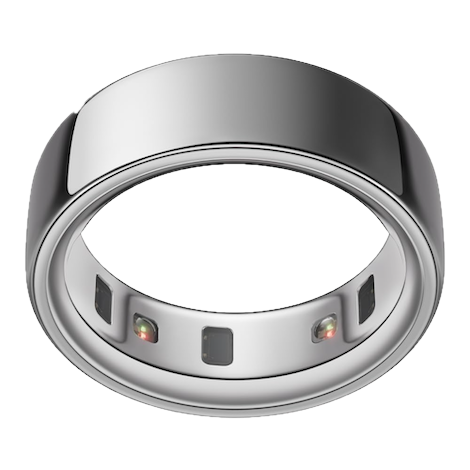
Product Highlights
Adapts to your body with advanced sensors for continuous, precise health tracking
Monitors 30+ signals, including HRV, sleep stages, SpO₂, temperature, and stress
Durable and sleek with recessed sensors
Up to 8 days of battery life
Upgraded app delivers clear, personalized insights
Pros & Cons
Pros
- Discreet and comfortable design
- Comprehensive sleep and health tracking
- Long battery life up to 8 days
- User-friendly app interface
Cons
- Expensive
- Requires a monthly fee for most features
- Fewer workout details than wrist-based trackers
- No screen
Bottom Line
The Oura Ring Gen 4 stands out for its discreet design and advanced sleep tracking capabilities. While it lacks a display and requires a subscription for full access, it’s an excellent choice for users seeking a non-intrusive health monitoring device.
Best Fitness Tracker for Everyday Use: FitBit Charge 6
Good for: Everyday people looking to track their steps and other health metrics
Best for Everyday Use
Fitbit Charge 6
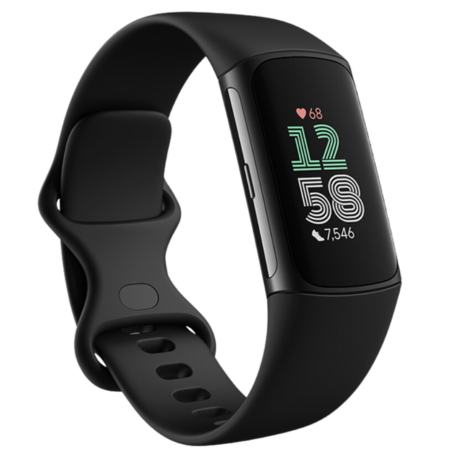
Product Highlights
- Fitbit’s No. 1 fitness tracker
- Built-in GPS
- Tracks exercise, sleep, stress, and heart rate
- 7-day battery life
- 3 colors available
Pros & Cons
Pros
- Built-in GPS for phone free workouts
- Features ECG app
- Tracks sleep
- 7 day battery life
- Heart rate appears on connected exercise equipment
Cons
- Google account required
- Reviews said watch disconnects sporadically
- Full functionality requires Fitbit premium
- Customer reviews frustrated with customer support
- Music controls only work with Youtube Music app
Bottom Line
The Fitbit Charge 6 is the newest version of Fitbit’s Charge series. It is an affordable fitness tracker with a lot of functionality like exercise, heart rate, and sleep tracking. It will work best if you are in the Google/Android ecosystem. Access to some data requires a Fitbit premium subscription. Customers generally liked the affordable watch, however, if they encountered an issue they were frustrated with the customer support.
Best Fitness Tracker for Sleep: Whoop 5.0
Good for: Athletes or those looking to get the perfect night’s sleep for optimal recovery
Best for Sleep
Whoop 5.0
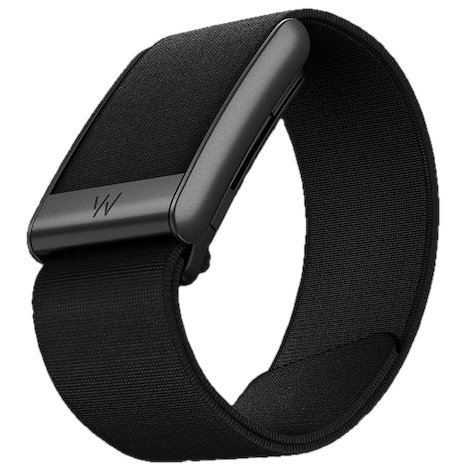
Product Highlights
Continuous heart rate, HRV, sleep, and strain tracking
Battery life of up to 5 days with wireless, on-wrist charging
Bluetooth-enabled heart rate broadcasting for connected fitness equipment
Waterproof and available in multiple strap styles and colors
Pros & Cons
Pros
- No screen for distraction-free, all-day wear
- Advanced recovery and sleep tracking with HRV insights
- Comfortable, lightweight design with multiple strap options
- Offers strain scores and personalized coaching via app
- Bluetooth integration for heart rate broadcasting to other devices
Cons
- Requires a monthly or annual subscription
- No built-in GPS for standalone activity tracking
- Can’t view metrics in real time on the device
- Limited usefulness without the app
- May not appeal to casual or non-athlete users
Bottom Line
The Whoop 5.0 excels in providing detailed sleep and recovery insights, making it a top choice for athletes and health-conscious users. However, its reliance on a subscription model and lack of a display may not appeal to everyone.
Best Fitness Tracker With Heart Rate Monitor: FitBit Inspire 3
Good for: Those who haven’t used fitness trackers and want something simple to start with
Best With Heart Rate Monitor
Fitbit Inspire 3
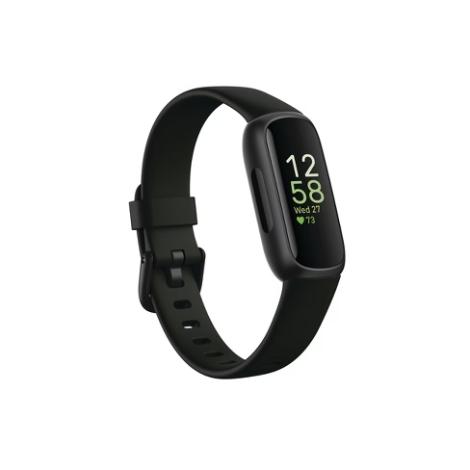
Product Highlights
- Affordable fitness tracker
- 3 colorways
- Additional bands available for purchase
- Up to 10 days battery life
- Water resistant up to 50 m
- Tracks heart rate, steps, blood oxygen, and more
- Provides sleep and stress scores
Pros & Cons
Pros
- Under $100
- 10 days of battery life
- Water resistant
- Color touchscreen
- Multiple colorways
Cons
- Small screen
- Needs to be connected to your phone for GPS
- Syncing to phone requires internet connection
Bottom Line
The Fitbit Inspire 3 is an affordable fitness tracker that still tracks a variety of activities and metrics—although the data is more basic than some more robust trackers. The Inspire 3 improves upon the design and aesthetic of the Inspire 2 with a streamlined look and color touchscreen. Additionally, it’s added a blood oxygen measurement feature, something that the Inspire line didn’t have up to this point.
Most Stylish Fitness Tracker: Ultrahuman Ring Air
Good for: Those who something that will complement their wardrobe
Most Stylish
Ultrahuman Ring AIR
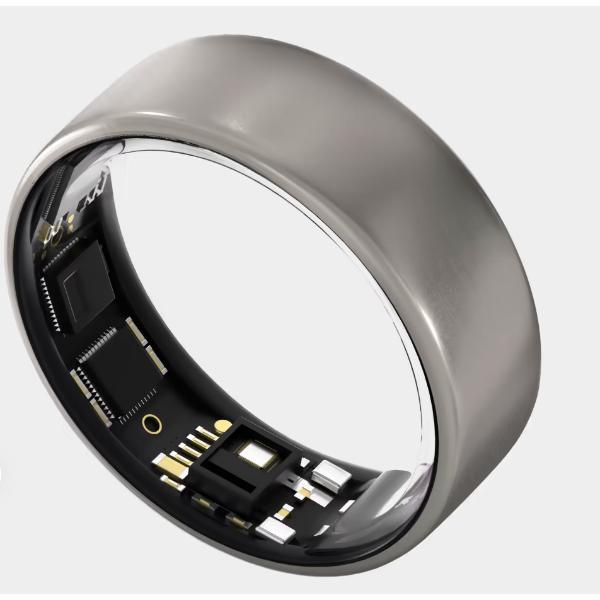
Product Highlights
- Ring fitness tracker to help you improve your sleep
- Features continuous heart rate variability (HRV) monitoring and temperature monitoring, and period heart rate monitoring
- Included: Ring AIR, standard ring charger, type-C to C cable
- 5 colors available
Pros & Cons
Pros
- Ultrahuman will send free sizing kit
- Provides a nightly sleep score and daily recovery score
- Sleep tracking with 10+ metrics
- No subscription required
- Can trade in a competitor’s ring for a discounted Ultrahuman ring
Cons
- Expensive
- Only 1 year warranty
- Customer reviews noted issues connecting with app
- Ultrahuman ring sizes different than traditional rings
Bottom Line
The Ultrahuman Ring AIR is a ring-style fitness tracker that does not require a subscription. When ordering you will have to request an Ultrahuman ring sizing kit, because the ring sizes are different from traditional rings. Customer reviews were generally positive and loved not having to pay for a subscription. Some customers did have issues with connecting the ring to the app.
Best Fitness Tracker Watch: Withings ScanWatch Light
Good for: Anyone who’s looking for fitness technology that looks like a traditional watch
Best Watch
Withings ScanWatch Light
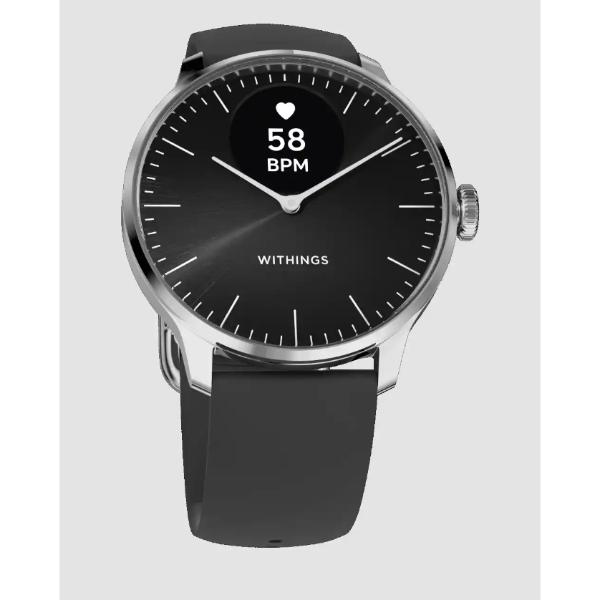
Product Highlights
- Analog-style watch
- Small display in the middle of the face watch
- Syncs with Withings app to display health metrics
- 30-day battery life
Pros & Cons
Pros
- Analog-style watch looks classier than most fitness watches
- Several health tracking capabilities, including period tracking
- Syncs with Apple Health and GoogleFit
- Water- and scratch-resistant
- FSA- and HSA-eligible
Cons
- Expensive
- Smaller display on the face watch
Bottom Line
The Withings ScanWatch Light is an analog-style fitness watch that looks like your traditional timepiece, with the added benefit of a small display in the center of the face watch that can be used to receive alerts and track your workouts. You can also get metrics on your heart rate, sleep, step count, and more via the Withings app. "I just love the look of this thing," says tester Anthony O'Reilly.
Best Fitness Tracker for Running: Coros Apex 2
Good for: Cardio fanatics and people marathon training
Best for Running
Coros Apex 2
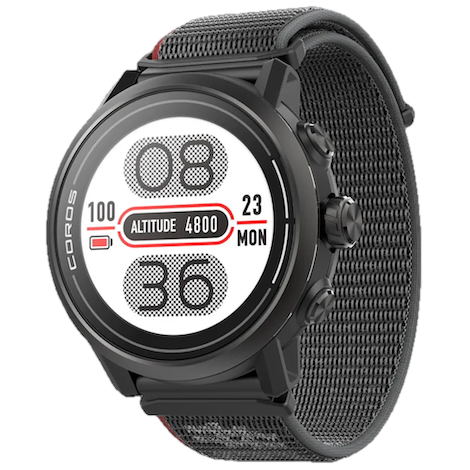
Product Highlights
Battery life of up to 45 hours in GPS mode, 17 days in daily use
Dual-frequency GNSS for improved location accuracy
1.2" always-on display with touchscreen and digital dial
Optical heart rate sensor, barometer, compass, and thermometer
Built-in topo and landscape maps with global offline access
Pros & Cons
Pros
- Long battery life (up to 45 hours in GPS mode)
- Dual-frequency GPS for improved accuracy in challenging terrain
- Durable design with sapphire glass and titanium alloy bezel
- Offline global maps and route planning features
- Offers recovery and training load metrics
Cons
- Lacks third-party app integrations (like Spotify or Strava sync)
- Limited smartwatch functionality (no voice assistant, basic notifications)
- Smaller screen and lower resolution than premium competitors
- Navigation interface can feel less refined
- Music storage and playback options are limited
Bottom Line
The Coros Apex 2 is a durable and feature-rich GPS watch ideal for serious runners, though it lacks some lifestyle features like music or smart notifications.
Best Budget Fitness Tracker: Xiaomi Mi Smart Band 7
Good for: Those looking to spend under $60 but still want a reliable smartwatch
Best Budget
Xiaomi Mi Smart Band 7
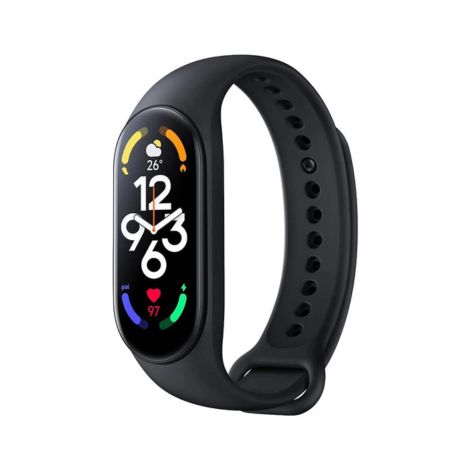
Product Highlights
- Fitness tracker band
- Tracks heart rate, SpO2, sleep, and menstrual health
- Over 110 workout modes
- Water resistant to 50 m
Pros & Cons
Pros
- Budget-friendly
- 110+ workout profiles
- Color touchscreen
- Water resistant to 50 m
- Long battery life
Cons
- Website and customer service is difficult to navigate
- Metrics aren't as accurate as other competitors
Bottom Line
The Xiaomi Mi Smart Band 7 is a fitness tracker that boasts over 110 workout modes. This fitness tracker tracks basic metrics, and at a competitive price of under $50. While the tracker isn't as accurate as other trackers (according to customer reviews), this is a solid option for beginners new to tracking their fitness.
Best Battery Life Fitness Tracker: Garmin Fenix 8 AMOLED
Good for: Those who want something that can be worn for a few days before being recharged
Best Battery Life
Garmin Fenix 8 AMOLED
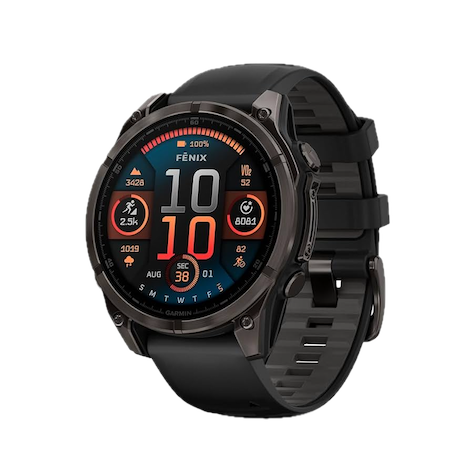
Product Highlights
1.3" or 1.4" AMOLED touchscreen display (model dependent)
Battery life of up to 16 days in smartwatch mode
Multi-band GNSS + SatIQ for pinpoint GPS accuracy
Full suite of sensors: heart rate, Pulse Ox, altimeter, compass, and more
Smart features like Garmin Pay, onboard music storage, and smartphone notifications
Pros & Cons
Pros
- Stunning AMOLED display for clear, vibrant visuals
- Extensive multisport tracking and performance metrics
- Topographic maps, ski maps, and multi-band GPS
- Long battery life despite bright screen (up to 16 days)
- Robust smartwatch features like music storage, Garmin Pay, and notifications
Cons
- Expensive, especially with premium features
- Bulky design may not suit smaller wrists
- Steeper learning curve due to wide range of features
- Some features locked behind Garmin Connect subscription tiers
- Battery drains faster with full AMOLED brightness and frequent GPS use
Bottom Line
The Fenix 8 with AMOLED display is one of the most advanced trackers available, but it comes with a steep price and isn’t ideal for casual users. But if you aren’t operating on a budget, this is a fantastic device that offers excellent battery life, a brilliant display, and top-tier tracking capabilities.
Best Fitness Tracker for Android: Samsung Galaxy Watch5
Good for: Anyone with an Android phone
Best for Android
Samsung Galaxy Watch5

Product Highlights
- Fitness watch for Android phones
- “Advanced Sleep Coaching” capabilities
- Claims their curved sensor provides a more accurate reading because it’s closer to the skin
- Up to 50 hours of battery life
- Customizable face watches and bands
Pros & Cons
Pros
- Built to work with Android phones
- Highly customizable
- Auto workout tracking
- Two size options
- Only takes 30 minutes to achieve 45 percent charge
Cons
- Expensive
- Water resistant only up to 5 feet
Bottom Line
The Samsung Galaxy Watch5 is the watch of choice for Android users looking for a smartwatch that syncs well with their phones.
Best Fitness Tracker for iPhone Users: Apple Watch Series 10
Good for: Anyone with an iPhone or in the Apple ecosystem
Best for iPhone
Apple Watch Series 10
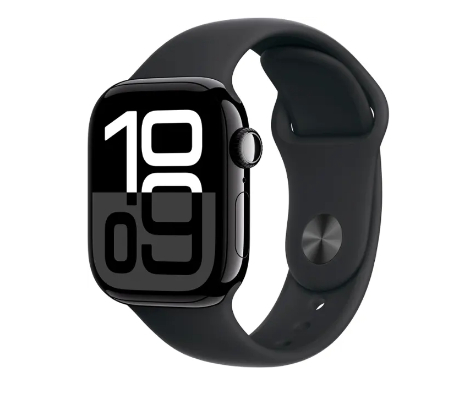
Product Highlights
-
Pricing starts at $399
-
18-hour battery life
-
Seamless integration with other Apple devices
-
Tracks heart rate, steps, ECG, sleep apnea
-
Can track body temperature and energy expenditure
-
Optional data plan available
-
Added data unlocks calls and texts without your phone
Pros & Cons
Pros
- Tracks heart rate, body temperature, ECG readings, and more
- Stream music, calls, and texts with a data plan
- Works seamlessly with other Apple products
- Fast charging and bright display
Cons
- Battery only lasts up to 18 hours
- Sensors don’t work well with tattooed skin
- Only a slight improvement from the Series 9
Bottom Line
The Apple Watch Series 10 is an excellent smartwatch that’s made some small improvements over the Series 9, including a larger, thinner screen and faster charging time. This is the perfect choice for iPhone users who want a watch that acts as an extension of their phone.
Best Garmin Fitness Tracker: Garmin Forerunner 965
Good for: Garmin enthusiasts or those looking for a stylish, durable fitness tracker
Best Garmin
Garmin Forerunner 965
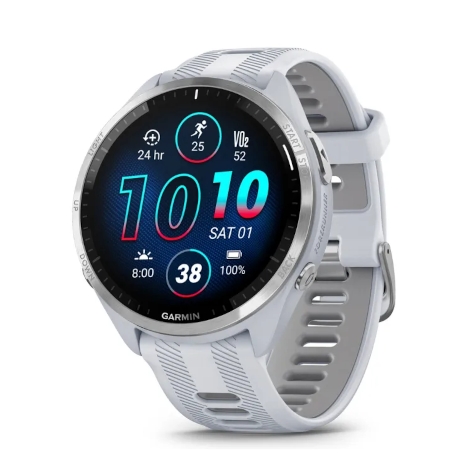
Product Highlights
- Garmin running watch
- Color AMOLED display
- Features multi-band GPS and built-in maps
- Provides suggested workouts and training readiness
- Shows on-wrist running dynamics and training status
- Includes USB C cable and manual
Pros & Cons
Pros
- Available in 3 colors
- Both touchscreen and button control
- Live location tracking and incident alerts with location data
- Built-in maps and multiband maps
- Tracks sleep data and provides a readiness score in the morning
Cons
- Short 1-year warranty
- Expensive at almost $600 dollars
- No ECG heart rate tracking
- No wireless charging capabilities
- Very mixed reviews on the Garmin Connect App
Bottom Line
The Garmin Forerunner 965 is a running watch with multi-sport functionality. It features an AMOLED display, multi-band GPS, and built-in maps and tracks your activity, recovery, and sleep. Customer reviews for that watch are mostly positive. However, multiple customers dislike the Garmin Connect interface.
Other Fitness Trackers We Researched and Tested
Although we haven’t personally tested all of the fitness trackers available today, we did do our research; here are some other wearables that didn’t quite make the list.
Fitbit Versa 3
As one of FitBit’s more premium watches, the Versa 3 tracks activity and sleep, can sync to your phone and comes with a built-in GPS. If ECG and skin temperature tracking are important to you, skip this wearable.
Amazfit Bip U
If you’re looking for a smart watch on a budget, the Amazfit Bip U series might be one worth checking out. It tracks heart rate, blood oxygen levels, sleep quality, stress levels, breathing, women’s health, plus all your workouts. It can also sync to your phone and can last for nine days on a full charge. Complaints about it breaking after light use, as well as poor customer service to resolve any issues, are worth noting though.
Garmin vivoactive 4S
If you’re looking for a smaller GPS smartwatch for everyday living, consider the Vivoactive 4s. It features all of the tracking that you could need—heart rate, blood oxygen level, sleep, step counting, plus training, planning and workouts—in a more petite package.
Amazfit Band 5
For $40, we had to dig into the hype behind the Amazfit Band 5. This slim device not only tracks your steps, sleep, blood oxygen levels, and menstrual cycle, it can also sync with your phone to function as a smart watch. Customer complaints about the display and brightness were the biggest red flags.
How We Picked and Tested
We carefully selected the fitness trackers on this list, and evaluated each one we researched and tested based on the following criteria:
- General wear: Is it comfortable? Is it easy to take on and off? Does it stay on during exercise? Do we like the look?
- Activity tracking: Does it count steps, and accurately? Does it track your workouts? Does it log running, biking and swimming along with other forms of cardio? Does it log resistance training?
- Record workouts: Can you record a workout? Can you create progressive training plans based on your previous training?
- Heart-rate accuracy: Does it monitor heart rate? Did it seem accurate?
- Battery life: How long can I go between a charge?
- Privacy and security: Does this fitness tracker sync to my phone? Does this fitness tracker have built-in GPS? Does this fitness tracker have Bluetooth capability? Does the fitness tracker have a companion app?
- Ease of use: Is it easy to access all of the features? Is it easy to navigate? Is it easy to track and record stats?
Benefits of Using a Fitness Tracker
You may be asking, “Why the heck do I need a fitness tracker?” Well, reader, there are many reasons. Regardless of your fitness level, I believe anyone and everyone can benefit from owning one. You can learn cool stats that will improve the way you workout, sleep, recover, and track your goals.
Goal Tracking
Without a fitness tracker, you may be way over or underestimating your activity levels. It can be frustrating to not see results, but a tracker will keep you accountable for your fitness goals.
With a fitness tracker, you’ll be able to see your daily step count, active minutes, calories burned, and more. Some compatible apps will offer workout suggestions, tips for success, and plans you can use to reach your goals.
Better Recovery
With better technology, many fitness trackers can be tools for recovery and wellness. REM cycle information and general sleep tracking can help you know how to optimize your training for tomorrow. If you didn’t get good sleep the night before (sleep experts say adults need 7-9 hours), then it might be time for a rest day or a lighter workout.
For example, the Whoop Strap 4.0 will measure things like the strain currently on your body. If you did a difficult workout the day before, your body may be too fatigued or strained to perform well tomorrow. With a fitness tracker, you’ll gain valuable insight into your body’s needs from a data-driven perspective.
Community
Most fitness trackers have an app where you can connect with other users. Having a community keeps you accountable and motivated. The majority of fitness trackers have options to connect with friends, participate in challenges, and climb leadership boards. The Apple Watch Series 9 gives you the option to compete weekly with friends to see who can crush their move goals. It adds a level of fun and competition that fitness doesn’t always have.
Another great place to get plugged into the fitness world is my Home Gym Community Facebook page.
Types of Fitness Trackers
A fitness tracker is an umbrella term that covers any type of wearable device that can monitor certain bodily metrics, such as your heart rate and daily step count. There are three main types: watches, bands, and rings.
Fitness watches, such as the Apple Watch or the Garmin vivoactive 5, are worn like a standard analog watch but act as a backup smartphone. They can generally be used to make calls and send texts, and also come with many apps and health tracking abilities.
Fitness tracker bands are for people looking for a more fitness-focused device. They track and send health metrics to a connected smartphone app. Some of them come with alerts about text messages or calls, though you generally can’t use the band to respond.
Fitness tracker rings are exactly what they sound like—fitness trackers worn around your finger, instead of the wrist. You wouldn’t want to go for this if you lift weights or use your hands a lot, but they’re comfortable and our expert product testers said they sometimes forgot they were wearing them. These are only used for tracking your health metrics.
Who Are Fitness Trackers For?
Fitness trackers are for anyone who wants to closely monitor certain health metrics to optimize their health or athletic performance. They can be used for tracking your daily step count to win the office walking challenge, to monitoring your heart rate to alert you of any spikes or drops. There have been several published reports of fitness trackers alerting people of heart attacks before they recognized the symptoms.
Certain fitness trackers can also be used to monitor your oxygen levels during training, tracking your menstrual cycle, and even your skin temperature.
Fitness Tracker Uses
Fitness trackers can be used to monitor certain health metrics. Anthony O’Reilly, GGR performance editor, used them to track his daily step count in New York City, a place where more people walk as their primary mode of transportation than anywhere else in the United States, and compare his numbers against his friends (he once walked more than 25 miles in one day).
Athletes use it to track their oxygen levels during training and their quality of sleep so they can fine tune their training and diet to achieve their ideal health levels.
Here’s a few examples of how Garage Gym Reviews writers and editors use their fitness trackers during training and everyday life.
“I got hooked on fitness trackers to count my daily steps, but now I love them for so much more,” says Nicole Davis, a certified personal trainer and GGR’s head of content. “I’m a data nerd and didn’t know it, so I like to see stats on my heart rate, sleep patterns, and more.”
“Having my notifications sent straight to my wrist was awesome, I spent less time checking my phone, which is good for my mental health,” says Erin Chancer, a certified personal trainer and GGR senior editor. “I also tend to anchor myself to my desk during work days, so having the tracker tell me to get up and move or stretch was a game-changer. And it’s so satisfying when it gives you kudos for beating your step goals for the day. I think I even said, ‘Thanks, watch!’ out loud.”
“I’ve always struggled to wake up in the morning, but having my Fitbit pick a time when I’m not deeply asleep and vibrate to wake me up has been amazing,” says Frieda Johnson, a certified nutrition coach and longtime fitness writer and editor. “It works so much better than a traditional alarm clock, it’s crazy!”
“I finally took the plunge and got an Apple Watch a year ago and didn’t realize how much I had been missing out on,” says Stephen Sheehan, a former rugby player, GGR writer, and certified personal trainer. “I love being able to track my heart rate, as I usually perform HIIT circuits and want to make sure I’m staying in the right zone. I also discovered a newfound appreciation for walking and moving in general, as the step tracking and and “stand up” reminder encourage me to be active more than ever.”
Two of our testers, however, said they go through stages where they either love or hate their fitness trackers.
“There’s a fine line to walk, especially for certain personality types, with how to use a fitness tracker without overdoing it,” says weightlifting coach and GGR Senior Director of Content Kate Meier. “I mostly enjoy getting my step count. I had to ditch the Apple Watch because the ‘active calories burned’ was just a little too much for me.”
Lauren Strong, GGR senior writer and a certified personal trainer, agrees. “It’s not only data/fitness tracking to obsess over, it’s another screen to stare at and not be present,” she says. “I actually had my husband do most of the testing for the Garmin watch I ordered this quarter. After about a month he got burnt out on the data and had to tap out.”
Kate and Lauren bring up good points. Two academic editors for the International Journal of Environmental Research and Public Health1 noted in 2023 that fitness wearables, “may also lead to negative health consequence especially if tracking steps, calories, or physical activity goals becomes extreme” and said one study2 found the devices led to dangerous habits like over-exercising and purging.
“While the research on the negative impact of wearable technology is limited, these issues should be considered by healthcare providers or fitness professionals who are recommending wearable technology to their patients/clients,” the two researchers state.
What to Consider When Buying a Fitness Tracker
Buying a fitness tracker doesn’t have to be stressful. I’ve done plenty of testing and research to eliminate the hassle for you. Check out the things you should consider when purchasing the best fitness tracker watch for your needs.
Price
Cheap fitness trackers can start as low as $30 and high-end options cost upward of $600. Decide what your price range is and what fitness features you’re willing to compromise on if you spend less.
Generally speaking, you get what you pay for. If you purchase a $20 fitness tracker, you’ll likely run into issues you wouldn’t with a more expensive option. Higher-priced trackers like the Apple watch often have financing options available if you aren’t able to pay in one sitting.
Activity Tracking
With the latest technology, most fitness trackers are able to track so much more than simply running and biking. Here are a few cool things you can keep track of with a wearable:
- Swimming laps
- Cardio: rowing, elliptical, walking, hiking, dancing, HIIT
- Strength: lifting weights, core training
- Yoga, pilates, and barre
- Sleep (REM, restlessness, tracking hours)
- Menstrual Cycle
Technology
Today’s fitness trackers have plenty of options for technology. Some can connect to apps, your smartphone, or even friends. Here are some things you might want your fitness tracker to be able to do:
- Play music, audiobooks, and podcasts
- Track EKG and blood oxygen levels
- Connect to smartphone to see texts, calls, emails, and notifications
- Ability to pay virtually
- Have compatible apps to connect and compete with friends
- Give performance assessments and form suggestions
- Track route via GPS
- Sleep stats (REM, restlessness, hours slept)
- HR variability, resting HR, and circadian rhythm
Style
Some fitness trackers are discrete and sleek while others are bulkier and easy to read. Many fitness trackers have options to customize the band or even the watch face. With a variety of colors and materials to choose from, pick a few that work with your lifestyle so you can interchange them.
Display
A simple LED display, through a watch face, or only through an app are a few options you can expect to see for a fitness tracker display. Some faces are larger and easier to read while others are smaller and more difficult to see for those who are far-sighted. The Apple Watch Series 7 has a full-color display while some fitness trackers are in black and white. When going out into the sun, keep in mind that come displays may dim or brighten without you manually switching it yourself.
Lifestyle Compatibility
Some of you want a fitness tracker that will keep tabs on your marathon training, while others are just looking to stay active and get enough daily steps. Depending on your exercise preference, you’ll want to find a compatible fitness tracker. For example, if you’re a serious athlete looking to get the most out of your training, getting a data-driven fitness tracker like the Whoop 4.0 can help you achieve your goals.
Water-Resistance
If you’re interested in swim tracking, water resistance is an important factor to look at when choosing a tracker. There are seven levels of water ratings to determine what activities are okay with different fitness trackers. The lowest water-resistance level is IPX7, which means the technology can only withstand 30 minutes of mild water exposure like rain or showering.
Most fitness trackers that are water-resistant will be a 5ATM. This means the tracker can withstand 50 meters of water exposure while swimming. If you are a scuba diver or someone who goes deeper than 50 meters, you may have more difficulty finding something that has been given the highest water rating, which is “Dive tested.”
Battery
Depending on the type of activity you like to do, charging your fitness tracker every night may not be feasible for you. For example, if you enjoy hiking or camping and won’t have access to an outlet to charge your tracker, choosing a wearable with long battery life is advisable.
It is also important to keep in mind that certain features will wear down the battery on a tracker more quickly. The GPS will generally cut down battery life significantly. Luckily, some trackers have rapid-charge options that require little downtime for your wearable.
Sleep Tracking
Being able to access analysis on your sleep patterns can help your overall wellness. By logging data on how long you sleep, the quality of your sleep, and the phases of your sleep cycle, as well as other lifestyle factors like exercise and alcohol, fitness trackers with sleep tracking can help you detect patterns that you may otherwise have not discovered.
For instance, do you sleep poorly after you’ve had a few glasses of wine with dinner? Does a hard workout mean for a more restful night’s sleep? If you go to bed earlier and wake up earlier, do you have more energy throughout the day?
While this sleep data is not as accurate as a sleep study would be, it does provide a framework for you when you’re thinking about your quantity and quality of sleep—an important pillar in your overall health.
Heart Rate Monitor
Heart rate monitoring on a fitness tracker can be beneficial for several reasons. For one, during a workout, you’ll be able to tell how much you’re exerting yourself, and even base your workout off of heart rate zones, which can be an effective way to improve your fitness level.
Second, many fitness trackers on the market today offer 24/7 heart rate monitoring—this means that your baseline heart rate will be tracked, and any deviation from that, maybe because of stress or illness, will be noted. Some of the most advanced fitness trackers also offer ECG monitoring, which measures how well your heart is working.
It’s worth deciding beforehand if you’ll just take advantage of heart rate monitoring for workout purposes, or if you could use it daily as a way to keep tabs on your overall health. Finding the best fitness tracker with a heart rate monitor shouldn’t be too complicated today, as most come equipped with this capability.
GPS
If you’re a runner, walker, or biker, GPS built into a fitness tracker can be a helpful feature. This means that you won’t have to bring your phone along to track your route. You’ll pay more for this capability, but if you’re outdoors training frequently, it could be a worthy investment.
Best Fitness Trackers FAQs
What is better than Fitbit?
If you’re not a fan of FitBit, some brands we’d recommend are the stylish and functional Garmin watches, such as the Garmin Forerunner 245, or the LeBron James- and Michael Phelps-endorsed Whoop 4.0 fitness band.
What are the most accurate fitness trackers?
The truth is, there’s no one fitness tracker that’s going to be the most accurate in all health and activity metrics. Studies have shown there’s always going to be a margin of error, which is why we’ve tested multiple types of fitness trackers.
Best Overall Fitness Tracker: Garmin vivoactive 5
Best Fitness Tracker Ring: Oura Ring
Best Fitness Tracker for Everyday Use: FitBit Charge 6
Best Fitness Tracker for Sleep: Whoop 4.0
Best Fitness Tracker for Beginners: FitBit Inspire 3
Most Stylish Fitness Tracker: UltraHuman Ring Air
Best Analog Fitness Tracker: Withings ScanWatch Light
Best Fitness Tracker for Runners: Garmin Forerunner 265
Best Budget Fitness Tracker Xiaomi Mi Smart Band 6
Best Battery Life Fitness Tracker: Garmin Fenix 7x Sapphire
Best Fitness Tracker for Android: Samsung Galaxy Watch5
Best Fitness Tracker for iPhone Users: Apple Watch Series 9
Which fitness tracker is best for health monitoring?
Fitness trackers measure all sorts of health and fitness metrics, from heart rate and sleep to blood oxygen and stress levels. Our favorite fitness tracker recommendation for most is the Garmin vivoactive 5, which measures resting and active heart rate, tracks your sleep and stress, menstruation cycles, and more. On top of that, the fitness tracker proved very comfortable throughout the day during testing.
Is Fitbit or Apple Watch better for fitness tracking?
Truth be told, no fitness tracker is 100% accurate when it comes to fitness tracking but in our experience FitBit had the edge when it came to tracking heart rate, steps, and other types of exercise.
Which fitness tracker is most accurate for calories burned?
The answer is actually none. A systematic review3 of studies done on fitness trackers found no brand came close to accurately tracking energy expenditure or calories burned during a workout.
REFERENCES
- Scheid JL, Reed JL, West SL. Commentary: Is Wearable Fitness Technology a Medically Approved Device? Yes and No. Int J Environ Res Public Health. 2023 Jun 27;20(13):6230. doi: 10.3390/ijerph20136230. PMID: 37444078; PMCID: PMC10341580.
- Plateau CR, Bone S, Lanning E, Meyer C. Monitoring eating and activity: Links with disordered eating, compulsive exercise, and general wellbeing among young adults. Int J Eat Disord. 2018 Nov;51(11):1270-1276. doi: 10.1002/eat.22966. Epub 2018 Dec 3. PMID: 30508261.
- Germini F, Noronha N, Borg Debono V, Abraham Philip B, Pete D, Navarro T, Keepanasseril A, Parpia S, de Wit K, Iorio A. Accuracy and Acceptability of Wrist-Wearable Activity-Tracking Devices: Systematic Review of the Literature. J Med Internet Res. 2022 Jan 21;24(1):e30791. doi: 10.2196/30791. PMID: 35060915; PMCID: PMC8817215.





